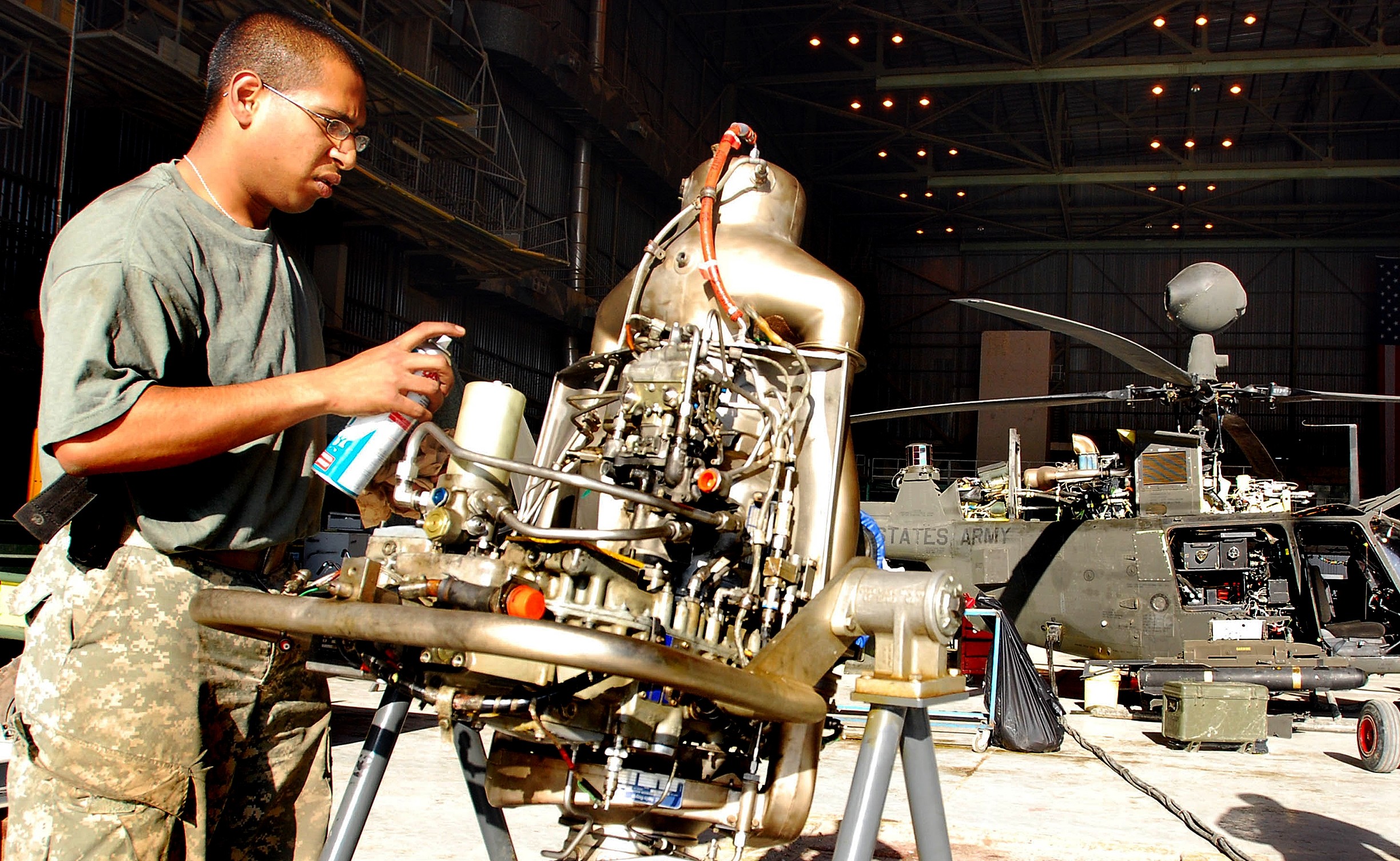<i>Working to ensure transfer is seamless to employees, warfighter</i>
The Base Realignment and Closure Commission's 2005 decision brought about many changes for the U.S. Army Materiel Command. One such change is the transfer of depot-level reparables procurement management and related support functions from across AMC to the Defense Logistics Agency.
<i><b>What's a DLR'</i></b>
"A depot-level reparable is an item purchased with the intent to overhaul and repair it over time. The items can be very complex and expensive and that's why they are typically rebuilt or overhauled rather than thrown away. But eventually the item becomes too worn to repair and must be replaced," said Gene Duncan, Army Contracting Command deputy director and member of the Army DLR working group. "Examples of such items are tank engines, radar components, electronics, ground vehicle transmissions and helicopter engines."
The decision only applies to the procurement of new replacement DLRs (commonly called "spares"), it does not apply to the repair of the reparable items.
Duncan explained that by transferring the procurement responsibility of buying DLRs from across DoD to one organization, DLA could aggregate requirements - resulting in a lower cost for the government.
"DLA will have DoD-wide strategy, sourcing and acquisition strength, increasing buying power and providing a single face to the customer," said Ronald Lewis, AMC deputy G-3/5 for Enterprise Integration and member of the joint Materiel Readiness Project Group which is responsible for making two-star level guidance regarding the DLR BRAC move.
DLA estimates that leveraging all procurement buys and managing them within a single agency will save DoD $1.9 billion over the next 20 years.
<i><b>What this means for AMC</i></b>
BRAC 2005, specifically the DLR Procurement Management Consolidation decision, transfers the DLR mission from the acquisition centers at Aviation and Missile Life Cycle Management Command, Redstone Arsenal, Ala.; Communications-Electronics Life Cycle Management Command, after the BRAC move from Fort Monmouth, N.J. to Aberdeen Proving Ground, Md.; TACOM Life Cycle Management Command, Detroit Arsenal, Mich.; and Rock Island Arsenal, Ill. after the BRAC move to Warren, Mich.
"Each of the services will still be responsible for managing the DLR items, maintaining the inventory, selling the item to the units, etc. The only thing that changes is that instead of turning to their local acquisition centers the services will go to DLA to buy them," said Duncan.
AMC, the only Army organization affected by this change, began planning by establishing an Army-level working group in October 2005. The group included representatives from AMCOM LCMC, CECOM LCMC and TACOM LCMC.
"The most important thing was to establish an Army vision first, which included major areas such as interpretation of BRAC language" said Rachel Ballen, Army Contracting Command procurement analyst and member of the Army working group.
According to Ballen, the group works together to present one unified Army voice to the joint-level working group, which includes representatives from the Navy, Air Force, Marines and DLA.
"Once we had a vision in place we developed a concept of operations with the initial core group of people and added subject matter experts to the team to develop the implementation and execution strategies. There are many complex steps involved concerning everything from personnel and policy to money and IT," said Ballen.
Along with the DLR mission, approximately 188 Army positions will transfer and the majority of these will be encumbered positions where employees will "transfer in place."
With the recent stand-up of and transfer of employees to the ACC, most personnel affected by the DLR move will be ACC employees at the time of the transfer, explained Duncan.
According to DLA, the primary job series affected will be 1102 and 1105 and includes buyers, price analysts, administrators, attorneys, small business advisors and competition advocates.
"The intent is that the transfer is virtually seamless to employees. One day they'll be Army employees and the next DLA. They'll sit where they sit now, using the same equipment, doing the same job," said Duncan. "Over time DLA will phase in standardizations."
"The expectation of the Army is that personnel being transferred will be taken care of and provided the skills and knowledge necessary to be successful and supports the Soldier," said Lewis.
<i><b>The way ahead</i></b>
According to Duncan, DLA provisional detachments were recently established and co-located with existing acquisition centers at AMCOM LCMC and TACOM LCMC (Warren). Those employees transferring to DLA have been identified, physically grouped together and are already functioning as a team, although still under the control of Army.
"Standing up these provisional detachments and co-locating them with the acquisition centers allows us to see the process in real-time and work out any bugs. Our goal is a smooth transition to DLA," said Duncan.
According to Lewis, the next step is to transfer the provisional detachments to DLA in February 2009.
"This new way of doing business will be a joint partnership. The Army will still maintain oversight and ensure the Soldier's needs are met," said Lewis.
With AMCOM and TACOM (Warren) poised for transfer, CECOM LCMC and TACOM (RI) are next on the agenda.
"CECOM LCMC also buys DLRs but because of their other BRAC move from Fort Monmouth to APG they won't transfer functions until their new facility is complete and they can accommodate employees at APG in 2011," said Ballen.
Duncan explained that TACOM LCMC (RI) is in a similar situation; they will not establish a provisional detachment but rather combine with the TACOM LCMC (Warren) detachment once their move is complete in late fiscal year 2010 or 2011.
"Right now we are working with DLA on some strategic sourcing initiatives to provide them with visibility on what our requirements are so that DLA can begin exploring opportunities to consolidate and set up strategic, long-term contracts," said Duncan.
"Through all the planning and execution we all have one common goal - ensure this change is seamless to the warfighter by providing a quality item and service at the best possible price," said Lewis.




Social Sharing